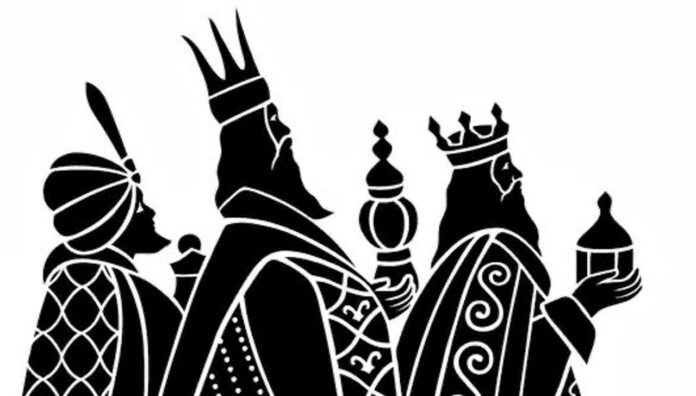‘We three kings of Orient are; bearing gifts we traverse afar.’
It is a familiar Christmas tune telling an ancient tale. Along with gold and myrrh, the Magi brought frankincense to honour the birth of baby Jesus.
Why?
It was a valuable commodity, as evidenced by over 22 mentions in the Bible.1-3 But early Christians were not alone in valuing the fragrant substance. For millennia frankincense was used by many people, including the Cannans, Assyrians, Babylonians, Greeks, Romans and Egyptians.2 Historical references reflect widespread therapeutic as well as ritual use.
First Century Roman writer Pliny the Elder claimed frankincense treated hemlock, and Islamic philosopher Avicenna (980–1037 CE) recommended it for tumours, ulcers and fevers.4,5 While frankincense was noted in a 6th Century Chinese manuscript, the Mingyi Bielu, credit for the first ‘written’ reference goes to the Egyptian Ebers Papyrus, 1500 BCE.
It recommended frankincense for throat infections and asthma, not to mention preparing bodies for mumification.4-6
What’s in a name
Frankincense got its name in the late 14th Century. Etymologists conclude it is a combination of the Old French word franc, meaning ‘noble, true’ – in this case probably signifying ‘pure’ or ‘of the highest quality’ – plus encens, meaning ‘incense’.8
Frankincense is many things
Frankincense is an aromatic oleogum resin obtained from trees in the genus Boswellia. Although there are 21 species in the genus, most frankincense comes from five species grown in north Africa, India, Oman, Yemen, and western Africa. The two most commercial species are Boswellia carterii and Boswellia freraeana.2,4,7
Harvesters collect the resin by making longitudinal incisions into the trunks and scraping out the milk-like sap which hardens into yellowish “tears”. The large, clear globules are scraped into baskets.4,5 But what’s in the baskets, chemically speaking, depends upon what species the trees are, where they grow and the type of climate. It also depends upon which of the 200 known compounds are extracted. Consequently, frankincense, also known as Boswellia, has numerous biological effects and mechanisms of action.2,9
Frankincense today
Surprisingly, despite its historical importance and promise as an ‘arsenal of bio-active small molecules with a considerable therapeutic potential’, Israeli researchers Arieh Moussaieffa and Raphael Mechoulamb conclude frankincense has been poorly studied.9 But they point to recent research indicating promise as an anti-inflammatory, antimicrobial and neuroprotective agent, as historical uses suggest.2,9,11
The findings reveal effective treatments may be developed for rheumatoid arthritis, ulcerative colitis, inflammatory bowel disease, Chron’s disease and asthma. Depression and anxiety-like behaviours may also benefit, along with wound healing and even cancer.2,9,11
Beyond the laboratory, frankincense is used primarily to manufacture incense and lozenges. A quick Google search shows, however, that herbal treatments and aromatherapy are big sellers.
The Therapeutic Goods Administration allows sale of such products for ‘Permitted Indications’ like stress, congestion and cough.2,5,10 And little wonder. Like long ago, frankincense is valuable today.
The global market for the essential oil alone is predicted to grow annually this year from A$308.8–$672.8 million by 2030.12
References
- Pentreath R. What are the lyrics to ‘We Three Kings of Orient Are’, and who wrote the popular Christmas carol? Classic FM 2020.
- Tošić NG, Nikolić, VD Vojkan. Miljković M, et al. Boswellia serrata resin isolates: chemical composition and pharmacological activities. Advanced Technologies 2022;11(1):76–87.
- Schultz C. There’s more to frankincense and myrrh than meets the eye. Smithsonian Magazine 2014.
- Hirst KK. History of frankincense: most precious cargo of Arabia’s incense trade route. ThoughtCo 2021 August 26.
- Botanical.Com. Frankincense.
- Stanley-Baker M. Mapping the collected commentaries on the Materia Medica. 2020.
- Fobar R. Frankincense trees – of biblical lore – are being tapped out for essential oils. National Geographic 2019.
- Online Etymology Dictionary. Frankincense (n). 2015.
- Moussaieff A, Mechoulam R. Boswellia resin: from religious ceremonies to medical uses; a review of in-vitro, in-vivo and clinical trials. J Pharm Pharmacol 2009;61(10): 1281–93.
- Australian Government. Therapeutic Goods Administration. dōTERRA Frankincense. 2021.
- Shahidpour F, ZareMehrjerdi F, RezaMozayan M, et al. The effects of frankincense extract on depression and anxiety-like behaviors induced by lipopolysaccharide in rats. Learning and Motivation 2021;73:101708.
- EINpresswire.com. Global frankincense Eesential oil market latest analysis of key players and growth forecast By 2030. 2022.



 Dr Peter Tenni[/caption]
Dr Peter Tenni[/caption]
 How should we deprescribe gabapentinoids, according to the Maudsley Deprescribing Guidelines[/caption]
How should we deprescribe gabapentinoids, according to the Maudsley Deprescribing Guidelines[/caption]



 Pharmacists have always prescribed, but they have the potential to prescribe much more
Pharmacists have always prescribed, but they have the potential to prescribe much more







